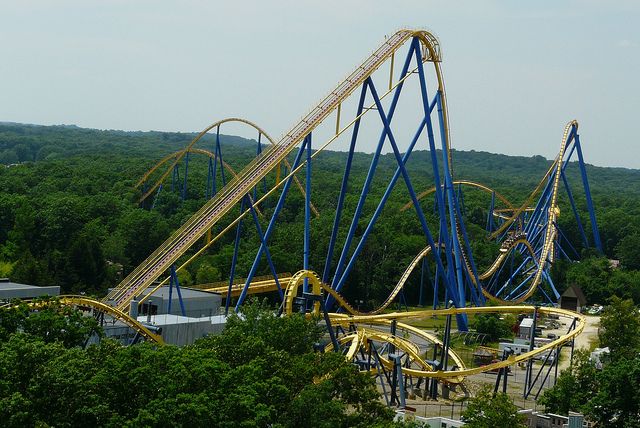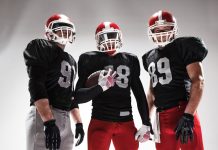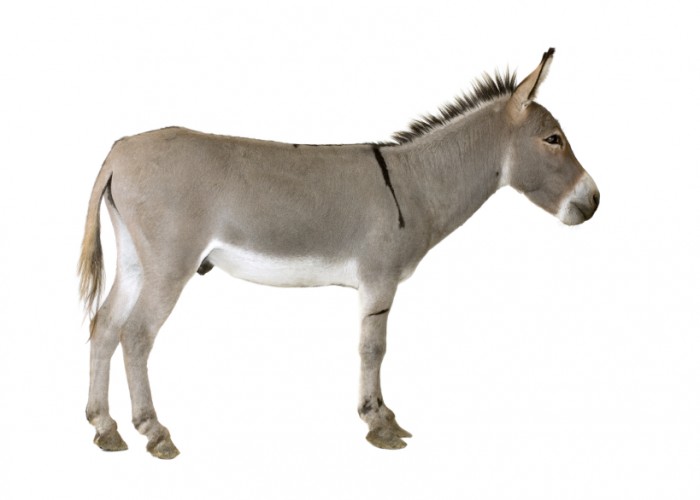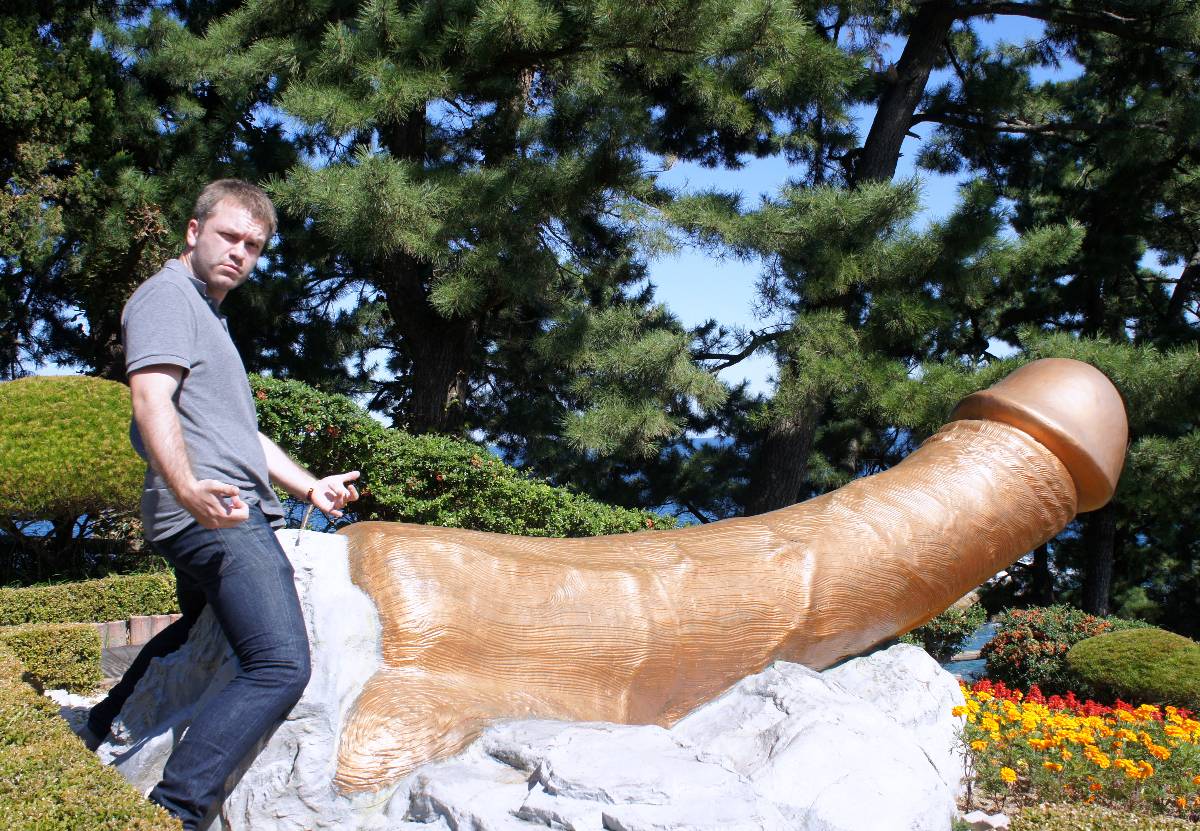Nitro Six Flags is one of the most thrilling roller coaster rides in Jackson Township, New Jersey. If you have the true spirit for the adventure, it is a must-try roller coaster ride for you. It is known for its humongous height, breathtaking speed, and extended airtime. The minimal seating make it more adventurous as there are no sides on the cars and no shoulder restraints. It will give you the experience of flying in the sky at an insane speed. Exciting? Read this post until the end to know more about the Nitro Six Flags roller coaster ride.
Table of Contents
Overview
Nitro was manufactured by Hyper Coaster model and Bolliger & Mabillard and came into being on April 7, 2001, for the public. Since its inception, it has always ranked higher among the best steel coasters in the Annual Golden Ticket award. Since the first hill is a whopping 233 feet high, you won’t have much time to collect your courage. When you reach the summit, you’ll be so far up that you’ll be able to see Philadelphia! But you won’t be able to take in the scenery for long because you’ll be thrust down a 215-foot drop almost immediately.
Nitro Six Flags Ride Experience
The Nitro Six Flags experience can be a bit scary but loaded with fun. The main highlights of the Nitro roller coaster are described below:
Queue and Station
The queue for Nitro consists of an indoor and outdoor section, followed by a long path leading to the station’s stairwell. The backside of Batman: The Ride and the Six Flags Great Adventure mechanical and storage area can be seen from the line. The Mortal Kombat theme is remixed for Nitro’s station music, which can be heard throughout the queue and station.
Layout
The train makes a left U-turn after leaving the station and ascends a 230-foot-tall (70-meter) lift slope. It drops 215 feet (66 metres) at a 68-degree angle after cresting the brink, hitting a maximum speed limit of 80 mph or 130 km/h. The train then climbs a 189-foot (58-meter) hill before diving left and costing over another high airtime hill.
Afterwards, it enters a unique B&M element termed as a hammerhead turn, a tight U-turn, which veers to the right. Travelling over another camelback hill, Nitro enters its S-curve and into the 540-degree helix. After the mid-course brake run, Nitro travels over three camelback hills, followed by a final break run before returning to the station.
Trains
Three open-air steel and fibreglass trains with individual lap bar restraints are used by Nitro. Each train has nine cars, each with four riders in a single row for a total of 36 passengers. With all three trains going, Nitro’s trains can be loaded and tested easily, resulting in a very high capacity. There are three main reasons for this:
- There is no such term as a “backup restraint” that needs to be tested. Most roller coasters have a seat belt that acts as a safety measure in case the main restraint unlocks. It is located either on the rider’s lap or keeping the main restraint down. Nitro used to have a backup safety restraint with a black knob that protruded from the seat. The lap bar clung to the knob, acting as a safety feature in the absence of a safety belt. These were later withdrawn when they were considered redundant because they were quickly disconnected and slowed loading times significantly.
- Before the train leaves and after the train enters the station, nothing needs to be moved out of the way. Most of B&M’s other coaster models do not have this feature. For example, before the train moves, the floor descends and the seats flip into a flying position on their flying roller coaster. On inverted roller coasters and floorless roller coasters, there must be a swing open gate in front of the trains. Additionally, there should be a floor retracting.
- Unlike other roller coasters, the trains can be deployed in a much faster succession. When one train crests the lift slope, the train in front of it can usually be dispatched onto the lift.
Track
The steel track of the roller coaster is 5,394 feet (1,644 metres) long, with a lift height of about 230 feet (70 m). Clermont Steel Fabricators, based in Batavia, Ohio, produced it. Pink and yellow dominate the course, with blue accents.
After El Toro’s 76-degree first drop, Nitro currently has the park’s second steepest lifted (as opposed to launched) roller coaster drop. Previously, signs were erected on the lift hill stairs that compared points on the hill to other tall buildings, such as Niagara Falls; however, these signs were later removed.
On-ride Camera
The on-ride camera for Nitro was previously located at the bottom of the second drop. However, it was relocated to the bottom of the first drop in 2006. Although it was briefly relegated to the bottom of the second drop, it was relegated to the bottom of the first in 2012. The camera placed on the ride can capture the breathtaking moments that you live on one of the most applauded roller coaster rides.
Ranking of Nitro Six Flags From Its Inception
According to the Golden Ticket Awards, the rankings of the Nitro from its initial years are stated in the below-given list:
(2001: 16), (2002: 4), (2003: 6), (2004: 6), (2005: 5), (2006: 4), (2007: 3), (2008: 3), (2009: 3), (2010: 3), (2011: 3), (2012: 3), (2013: 4), (2014: 5), (2015: 5), (2016: 5), (2017: 7), (2018: 11), (2019: 10)
In the covid outbreak situation, it has released advice that older adults and people of any age who are facing severe medical conditions are more vulnerable towards the risk of Coronavirus illness.
Final Words!!
If you have a true adventurer spirit and want to pick some breathtaking moments from life, then the Nitro Six Flags is a must-try roller coaster ride for you. The most fascinating aspect of this trip is the track’s appearance. You’ll feel like you’re cutting through the air on a fine thread of steel because it’s so thin and elegant. For more enthralling posts, you can visit our blog section.








